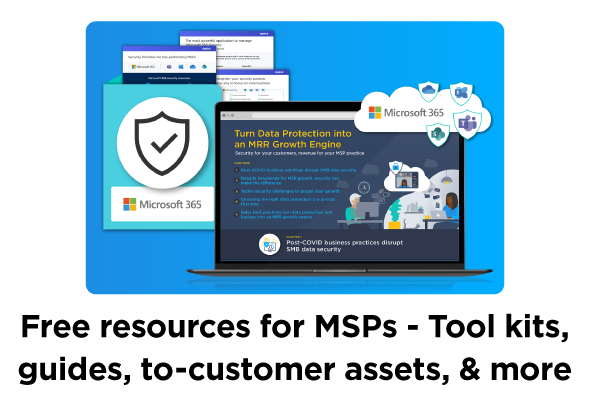Copilot is different than other M365 products in several ways. For MSPs assisting customers in adopting Copilot, it’s important to know that there are several stages to navigate to get to the finish line.
On almost a weekly basis, partners tell me that rolling out Copilot for Microsoft 365 can be complicated for even a single customer, and most of them say that each customer is often at a different stage of this journey. They mention that when you need to manage the road to Copilot across many customers, it becomes almost impossible to know where to start, what to do, and how to do it in a scalable and repeatable manner.

Below is how many of these partners have segmented their customers:
Drive Microsoft 365 Adoption – Copilot needs data to ground its answers in. The path to Copilot begins with assessing if each customer has sufficient data in M365 for Copilot to be useful
Deploy Basic Security Readiness – Making sure the customer’s tenant has basic security in place before unleashing
Investigate Risk and Resilience – Adding the next layer of security including security framework compliance requirements
Within each of these stages, there is a lot of information to gather. Decisions then need to be made based on that information, and changes must then be managed and monitored within customer’s infrastructure to attain readiness to use Copilot effectively and safely.
That’s where Security Manager’s Plan and Deploy Copilot for Microsoft 365 Copilot Workflow comes in. This single workflow provides a project framework to not only enable Copilot when a customer is ready, but first to ensure they are ready to begin using Copilot, and to track their progress on the road to readiness.
This single workflow was designed to help MSPs be aligned to the Microsoft documentation around deploying Copilot for Microsoft, with the following added advantages:
- Repeatable: All of the steps are in one place and in a defined order, making it possible to deliver Copilot deployment in a consistent, repeatable manner.
- Scalable: The relevant information for each customer is automatically gathered for you rather than requiring you to log into each M365 tenant separately, enabling you manage multiple customers at different stages of readiness
Let’s quickly look at the Plan and Deploy Microsoft 365 Copilot Workflow and delve a little deeper into how to get started.

Assessing Microsoft 365 Adoption
Start by running ‘Get Microsoft 365 Copilot User Readiness Report’ in the workflow which will gather data for you on your customers and the users within those customers. Be sure to select several customers when running this script as it creates two reports, each with useful information on how ready those customers are for Copilot.
- User Readiness Summary Report – With your customers listed down the left-hand side, take note of any customers that have Copilot licenses already or at least have users who are ‘Ready for Copilot’. Use the rest of the columns to understand where you need to drive adoption and usage of Microsoft 365 services.

- User Readiness Report – For the customers that have a higher level of usage, check the ‘Copilot Readiness Overall Status’ to discover your most likely pilot group for the initial rollout.

Subscription Status and User Detail Reports
There are two reports that augment the information above, going into more detail around usage and licensing when necessary. Use these if you need finer detail on a customer tenant including understanding what base licenses they have in place. Perhaps this is an opportunity for you to talk to them about moving to a more premium SKU from Microsoft?
Armed with the information above, you now have a better idea of where your customer base is in their journey to CoPilot
But don’t stop there, you can carry on while they increase Microsoft 365 usage While a customer is still working on M365 usage in order to be ready for Copilot, a process which can simply take time to occur, it has become best practice for MSPs to continue managing their customer’s journey around security readiness for Copilot. To get a customer to Copilot as quickly and effectively as possible, this can be a parallel process. This stage of their journey involves assessing customers against M365 security baselines, compliance standards, and other security considerations.
This will be covered in our upcoming blog…Stay tuned!
Already a Security Manager subscriber? Use the workflow now



